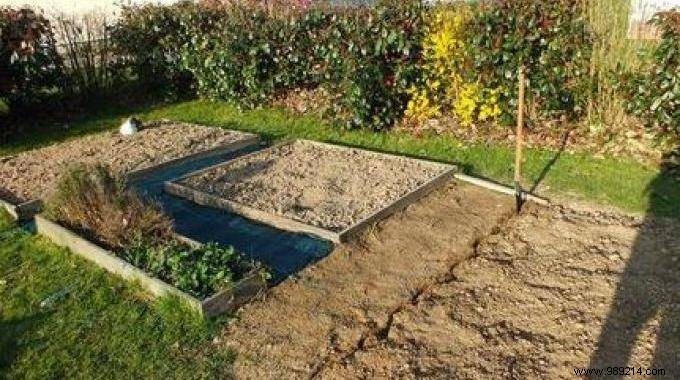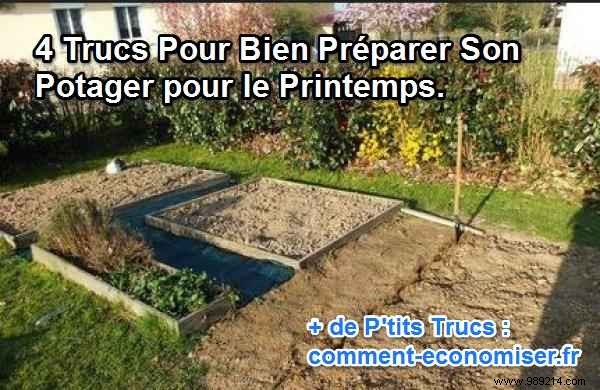
It's decided! I'm creating my family vegetable garden!
I'm going to have to play tight, because I don't have much time left.
But with a little organization and tricks, it is still possible to prepare your vegetable garden.
Spring and summer will be full of flavors with these easy vegetable garden tips!

I already have the plan in mind and I know what to plant! My square won't be very big:there are only three of us at home. No need to overdo it. Especially since within 250 m, there are plants in greenhouses!
Green beans, peas, carrots, salads and melons on my list. I keep a place for rosemary, thyme, basil and sage. I saved a noble laurel that I replanted in a corner. Start small.
I planned 4 m X 2 m. The western fence will make an excellent support for peas and green beans. Against my hole-drilling dog, I will put up a barrier to prevent him from ransacking everything. I will recover cane from Provence, willow or even make braces with wicker. It's so pretty!
Sunny in summer, shady the rest of the time, my garden surrounded by houses and trees is protected from the wind. I will put up my fence after turning over and amending the soil.
I mow the plot in mulching mode. All that remains is to dig. Considering the size, a spade fork will suffice. Go have some sport!
From the top left corner of my rectangle:
I prick my spade fork. I plant it in the ground with my foot. I press down on the handle to lift the clod. I'm returning it.
Hop, the vegetation above passes below.
With the spade fork, I break up the clods. I work backwards, in strips of one or two tool widths. I remove roots and stones. I leave a foot-long passage between flowerbeds.
To know if the soil is calcareous or acidic:looking at the natural plants near your garden is enough to know its nature. Is its texture sandy, clayey, loamy? Take the pudding test!
My land is sandy :around grow pines, heather, gorse, ferns... The soil is acidic. It is also rich in nitrogen, because there are black nightshades, nettles, lamb's quarters... I'm just going to add potting soil and bury it on a few beds.
I spread decomposed horse manure on the beds of pumpkin and nitrogen-guzzling vegetables and bury it. It will decompose and the earthworms will finish the job. Nitrogen, if the salad needs it for its leaves, would prevent fruits and seeds from growing (beans, peas).
In clay / silty soil :incorporate a well decomposed manure, because it disintegrates less quickly. Brown gold, dried blood, crushed horn, always to be chosen according to the nature and texture of the soil, are to be preferred. Never fresh manure:it burns the roots.
And There you go ! My little vegetable garden is ready! I have to prepare my planting schedule:reading the sachets, displaying the plantings. I choose plants and vegetables that are planted now (radish, lettuce, tomatoes...) And I can finally rest!